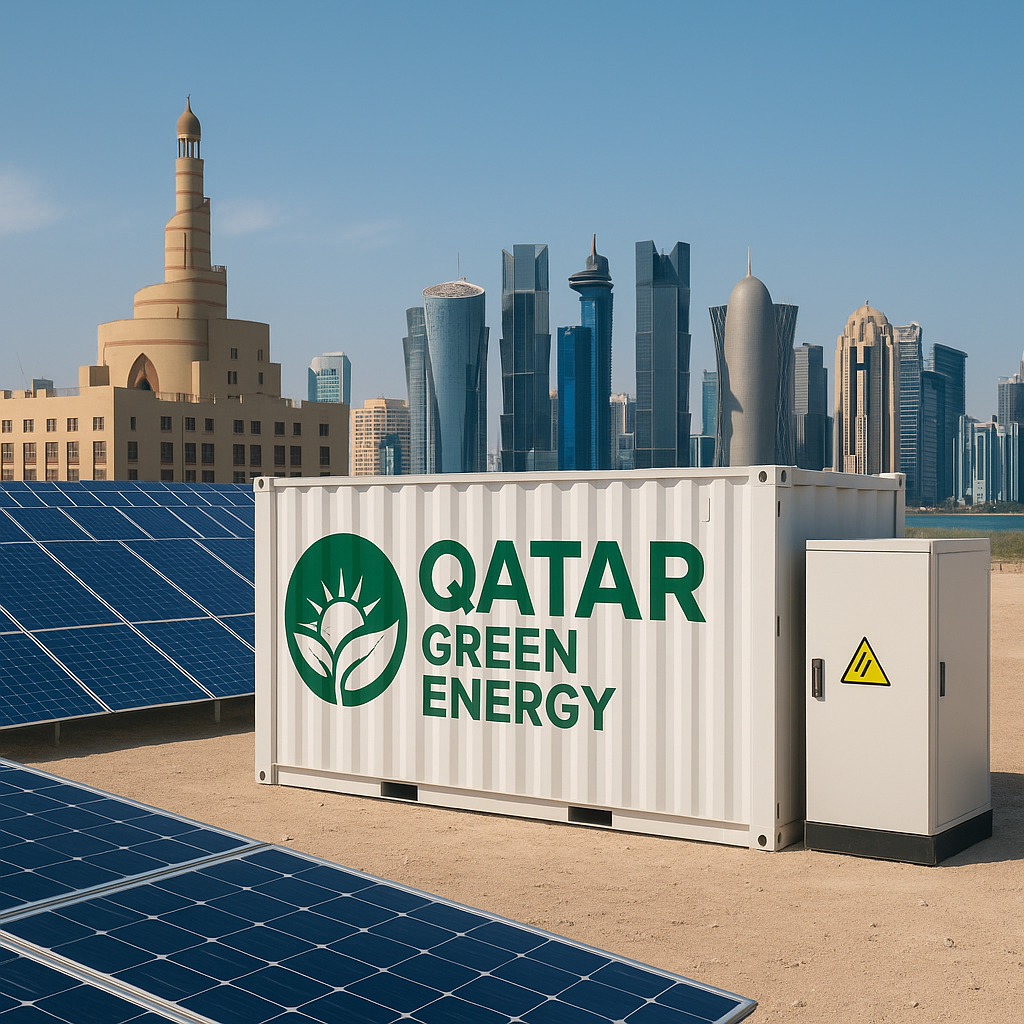Qatar’s inaugural $2.5 billion 2024 green bond marks a milestone in Qatar’s contribution to Green Energy, capital mobilization into renewable energy infrastructure, low-carbon real estate, and core infrastructure upgrade. The proceeds are financing National Energy Strategy target of 18 % of renewables by 2030—solar PV development to 4 GW in particular—and supporting the speeding up of deployment of storage capacities to stabilize intermittent supply. Benefiting foremost are utility-scale solar farms and test battery energy storage systems (BESS) and smart-grid and Energy Management System upgrades of the next generation. Green bonds also made possible new, off-grid uses such as the Mobile Solar Container and Huijue’s mobile 480W Solar PV Container with modular, fast-deploy configurations for remote regions. This “green” liquidity injection accelerates Qatar’s transition to low-carbon energy assets diversified from LNG-biased production—but navigating one’s way through regulatory regimes, project pipeline readiness, and integration challenges will finally decide the ultimate magnitude of its impact.
Audience and Content Analysis
Three audiences are being addressed in this article:
- Investors & Financial Analysts
Sovereign credit models, green bond premiums versus traditional Eurobonds, and risk-return profiles of renewable and storage projects financed under the $2.5 billion issue are applicable.
- Energy Developers & EPC Contractors
Want to know about green bond proceed allocation—specifically to solar PV, Renewable Energy Storage Solutions, and smart-grid upgrade—and technical comment on modular deployments like the Huijue 480W Solar PV Container.
- Policy Makers & Grid Operators
Citing government regulation-making on green finance structures, interconnection standards for BESS, and the best use of Energy Management System (EMS) platforms to extract maximum value from green-bond-financed assets.
To satisfy Google algorithmic and reader engagement needs, the content uses a structured format (H2/H3 headings), bullet points, a conversational tone (e.g., “green bonds are turbochargers for renewables”), and an optimal keyword density (3–5 % target for Qatar’s Green Energy footprint).
Qatar’s $2.5 Billion Green Bond Programme
Issue Highlights
- Record Regional Green Eurobond: Qatar tapped international markets in May 2024, issuing USD 2.5 billion 10-year green bond with a yield of approximately 4.125 %.
- Use-of-Proceeds Framework: All proceeds to be utilized for eligible green projects, including renewable energy (solar, wind), energy efficiency, sustainable transport, and green buildings.
- International Certification: The issue was accompanied by a Second-Party Opinion of an ESG verifier, in line with ICMA’s Green Bond Principles for reporting and transparency.
Alignment with National Strategy
- 4 GW Solar Target in 2030: Qatar’s National Energy Strategy aims for 18 % of renewables in the power sector, which requires the mass installation of solar PV and provision for storage assets to smooth out supply.
- Grid Modernization: Proceeds from green bonds are invested in funding smart-grid technologies—smart meters, SCADA, and Energy Management Systemupgrades—to make the grid agile and resilient.
Contribution to Renewable Energy Sector
Rapid Solar PV Rollout
- Utility-Scale Solar Parks:Qatar has floated tenders for 800 MW of solar PV, and green bonds de-risk PPAs by offering capex financing support for part.
- Distributed Solar Initiatives:Pilot rooftop and containerized PV projects—like the Mobile Solar Container concept—are opening up remote villages and industrial estates.
Financing Low-Carbon Development
- Low-Carbon Real Estate: Energy-efficient district cooling and green building schemes are also funded through proceeds, reducing overall power demand and offering room for further renewable penetration.
- Public-Private Partnerships: The green bond framework facilitates joint ventures between sovereign, Qatari institutions, and private developers, minimizing procurement and project delivery complexity.
Impact on Energy Storage Market
Scaling BESS Projects
- Pilot Storage Deployments:Green bond funding of initial 100 MWh BESS pilot deployments to test modular lithium-ion modules for peak shaving and grid stability.
- Scaled Storage Tenders:Tendered 500 MWh of new capacity in 2025, funded by green bond funding for tendering international EPC contracts and technology partners.
Increasing Flexibility & Firming
- Energy Management Systems: Investment in next-generation EMS platforms that integrate AI-based dispatch and real-time monitoring enables storage assets to participate in frequency regulation and arbitrage markets.
- Modular Solutions: Containerized Energy Storage Solution designs—like Huijue’s Collapsible 480W Solar PV Container—demonstrate portability and rapid scalability for off-grid and industrial applications.
Mobile and Containerized Solutions Highlight
- Huijue 480W Solar PV Container:Plug-and-play, ISO-standard container equipped with 480 W of PV power per container, fitted with plug-and-play connectors, Energy Management System, and fire protection inside.
- Mobile Solar Container:For use at military camps, disaster relief, and construction sites, the units roll out to deliver up to 5 kW of power instantly with the possibility of battery extension.
Integration Challenges & Next Steps
- Regulatory Frameworks:Supporting streamlined permitting and grid connection of green-bond-financed storage and smart-grid projects.
- Project Pipeline Readiness:Creating local EPC capacity and supply chains to roll out high-end solar-plus-storage at scale.
- Transparency & Reporting:Supporting strong impact reporting to satisfy ESG investor and reinvestment needs under the green bond framework.
While Qatar proceeds to capitalize “green” style on its pivot toward clean power, the ultimate test will come in converting dollars into dirty-proof megawatts of clean power—and gigawatt-hours of flexing storage—across its sunbaked peninsula.

